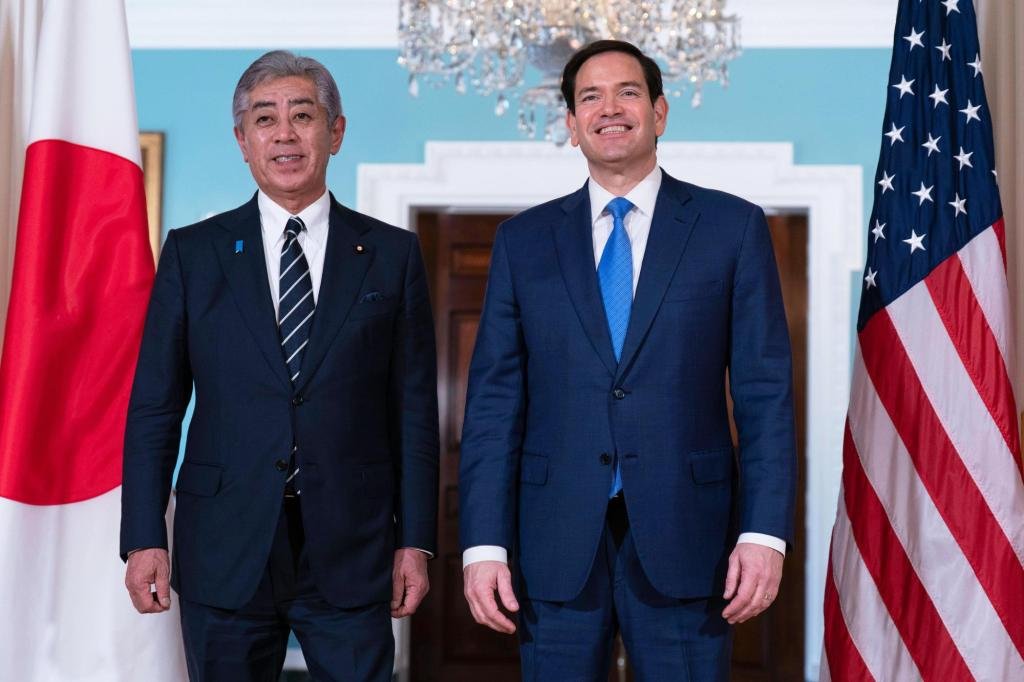Trade Wars and Diplomatic Challenges: The Ramifications of U.S. Tariffs in Asia
As the sun rose over Kuala Lumpur, foreign diplomats congregated at the Convention Centre, their chatter a mix of camaraderie and anxiety. For them, the spacious halls were more than just a venue; they were the stage for a crucial confrontation between geopolitics and trade relationships. Just days prior, President Donald Trump sent shockwaves through Asia, issuing notifications of impending tariffs expected to hit several nations—including Malaysia, South Korea, and Japan—if they failed to strike favorable trade deals with the United States.
Security Concerns Overshadowed by Trade Tensions
This backdrop of heavy tariffs casts a long shadow over Secretary of State Marco Rubio’s inaugural diplomatic expedition to the Southeast Asian Regional Forum. Meeting amid rising tensions in the South China Sea, where China’s assertiveness is raising alarms, Rubio’s task was complicated even further by Trump’s declared intent to levy tariffs as high as 25%. With trade looming large over diplomatic discussions, the question remained: could U.S. officials pivot their focus away from economic policy and towards regional security?
“It’s a daunting task,” noted Dr. Linda Chao, an Asia-Pacific relations analyst at the Global Policy Institute. “Diplomats are grappling with economic pressures from the U.S. while trying to maintain their own national interests in the face of Chinese expansionism.” The stakes are particularly high for ASEAN nations, many of whom rely heavily on a trade relationship with the U.S., not to mention the growing clout of Beijing. As Chao emphasizes, “These countries will employ a balancing act, weighing their response to U.S. tariffs against the need for regional stability.”
A Balancing Act: U.S. and Asian Interests
In the lead-up to the ASEAN meetings, foreign ministers from various nations were well aware of the iron grip tariffs could impose on their economies:
- South Korea: Facing 25% tariffs could decimate major exporters like Samsung and Hyundai.
- Japan: Tokyo’s automotive sector is already bracing for a storm.
- Malaysia: Reliant on electronics exports, a 25% tariff could stifle growth.
- Vietnam: Newer to the targeted list, its burgeoning market would feel the pinch as well.
The foreign ministers in attendance understood that their collective response to U.S. tariffs would be pivotal. Malaysian Prime Minister Anwar Ibrahim recently articulated this sentiment when he proclaimed that “ASEAN will confront challenges as a united bloc,” highlighting the urgent need to address U.S. economic policies. This solidarity is crucial—countries in the region are grappling not only with tariffs but also with the geopolitical chess game being played with China.
The China Factor: Navigating Diplomatic Minefields
As Rubio prepared to engage his counterparts, he would find himself in the unenviable position of trying to sell an “America First” agenda to a region seeking stability and economic prosperity. Sitting across from seasoned diplomats, including China’s Foreign Minister Wang Yi, Rubio’s ability to project U.S. influence would be severely tested.
“Wang Yi has masterfully navigated this scene for years,” said Danny Russel, vice president of the Asia Society Policy Institute and a former assistant secretary of state. “Rubio is certainly a rookie, and it will show.” Historically, these dialogues have served as avenues for building trust. However, current economic pressures are creating a climate of skepticism that may compromise such trust.
Trade Deals and Diplomatic Tools
The irony is that while Trump has put tariffs on the table as a bargaining chip, trade agreements like the Comprehensive and Progressive Agreement for Trans-Pacific Partnership (CPTPP) offer alternatives that ASEAN members are eager to explore. Following recent trade deals with the U.S., countries like Vietnam and Singapore are advancing their regional influence. The divergence between these countries’ openness to trade and the U.S.’s protectionist approach creates a ripe environment for competing interests.
Dr. Yuki Saito, an economist specializing in international trade, points out that “the rising embrace of regional trading partnerships, such as RCEP, illustrates how Southeast Asian nations are increasingly willing to move away from reliance on the U.S. if it does not cater to their needs.” This trend might prompt a reevaluation of America’s long-standing role as a linchpin in regional governance.
Conclusion: A Future of Uncertainty
The Kuala Lumpur meetings mark a critical juncture in U.S.-Asia relations. As Rubio navigates the conference halls, his agenda laden with discussions centered on maritime safety and combating transnational crime, the looming threat of tariffs serves as an unsettling backdrop. The forthcoming days will determine if these dialogues can thaw the frost created by economic policies, or if the diplomatic efforts will be overshadowed by trade wars. As the world watches, one thing remains undeniably clear: the era of American trade supremacy is under siege, and the outcome of this delicate diplomatic dance will resonate far beyond the borders of Southeast Asia.





